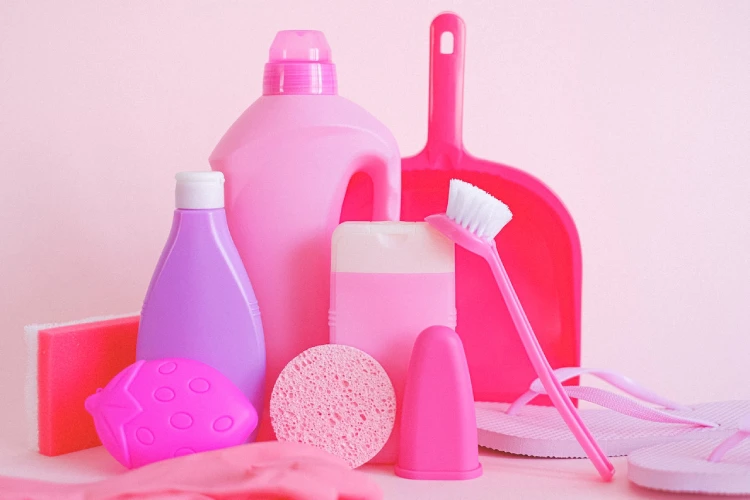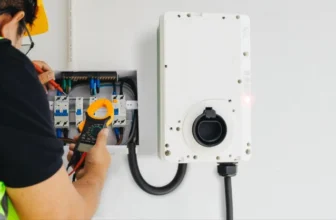6 Things Businesses Should Know About Creating Plastic Products
Are you a business owner looking to create a plastic product but feeling overwhelmed by the process? Look no further! In this article, we will guide you through the intricate world of plastic product creation, providing you with six must-know tips to navigate this journey successfully. From conceptualization to manufacturing, we understand the challenges that arise when bringing a plastic product to life. Whether you are a startup or an established company, these tips will empower you to make informed decisions, optimize your product’s design, and ensure its marketability. So, let’s dive in and unlock the secrets to mastering the plastic product creation process!
Importance of Understanding the Plastic Product Creation Process
Creating a plastic product can be a complex and multifaceted process. Without a clear understanding of each step involved, businesses risk facing various challenges that can delay or even derail their product development efforts. By mastering the plastic product creation process, you can streamline your operations, reduce costs, and enhance the overall success of your product in the market.
Step 1: Identifying the Need and Defining the Product
Before diving into the creation process, it is crucial to identify the need for your plastic product and define its purpose. Conduct market research to understand your target audience, their pain points, and how your product can solve their problems. This step will help you gather valuable insights that can inform the design and functionality of your product.
Once you have a clear understanding of the need, define your product’s features, specifications, and intended use. Consider factors such as size, shape, color, and any unique functionalities that will set your product apart from competitors. By clearly defining your product, you set the foundation for a successful plastic product creation process.
Step 2: Designing the Plastic Product
Designing a plastic product involves translating your product idea into a tangible form. This step requires careful consideration of aesthetics, functionality, and manufacturability. Collaborate with a skilled industrial designer or design team to create detailed 3D renderings or CAD models of your product.
During the design phase, it is essential to consider factors such as material compatibility, structural integrity, and ease of assembly. Designing for manufacturability is crucial, as it ensures that your product can be efficiently produced at scale without sacrificing quality or incurring unnecessary costs. Regular communication and feedback loops between the design team and the manufacturing team will help streamline the process and avoid potential issues.
Step 3: Material Selection for the Plastic Product
Choosing the right material for your plastic product is a critical decision that can significantly impact its performance, durability, and cost. Consider the specific requirements of your product, such as strength, flexibility, chemical resistance, and appearance, when selecting a material.
Common types of plastic materials include polyethylene (PE), polypropylene (PP), polyvinyl chloride (PVC), acrylonitrile butadiene styrene (ABS), and polycarbonate (PC). Each material has its unique properties, advantages, and limitations. Consulting with material experts or suppliers can help you make an informed decision based on your product’s specific needs.
Step 4: Prototyping and Testing the Plastic Product
Prototyping and testing your plastic product are crucial steps in the creation process to ensure its functionality, usability, and manufacturability. Building a prototype allows you to evaluate its design, identify any flaws or areas for improvement, and make necessary adjustments before moving forward with manufacturing.
There are various prototyping methods available, including 3D printing, CNC machining, and injection molding. Choose the method that best suits your needs based on factors such as cost, time, and complexity. Once the prototype is ready, conduct rigorous testing to validate its performance and functionality. Seek feedback from potential users, make necessary iterations, and refine your design until you achieve the desired results.
Step 5: Manufacturing the Plastic Product
Manufacturing a plastic product involves transforming your design into a physical product at scale. Selecting the right manufacturing process is crucial to ensure efficiency, quality, and cost-effectiveness. Common manufacturing methods for plastic products include injection molding, blow molding, extrusion, and thermoforming.
Collaborating with a reputable manufacturer experienced in producing plastic products can help optimize the manufacturing process. It’s important to research different manufacturers, such as low volume plastic injection molding companies to choose what is right for you. Ensure that the manufacturer has the necessary capabilities, equipment, and quality control measures in place to meet your requirements. Regular communication and monitoring during the manufacturing process will help address any issues promptly and ensure a smooth production flow.
Step 6: Packaging and Distribution of the Plastic Product
Once your plastic product is manufactured, it is essential to invest in packaging that protects it during transportation and enhances its market appeal. Consider factors such as packaging design, materials, labeling, and branding to create an attractive and functional package.
Collaborate with packaging experts to choose the right packaging materials that align with your product’s requirements and sustainability goals. Additionally, establish a robust distribution strategy to ensure your product reaches its intended market efficiently. Consider factors such as storage, transportation, and logistics to optimize the distribution process and deliver your product to customers promptly.
Common Challenges in the Plastic Product Creation Process
While navigating the plastic product creation process, businesses may encounter several challenges that can hinder progress. Some common challenges include:
● Cost constraints: Balancing the desired product features with manufacturing costs can be challenging, especially for startups or small businesses with limited resources.
● Design limitations: Designing a plastic product that meets both aesthetic and functional requirements can be a delicate balance. It is essential to consider manufacturing capabilities and limitations during the design phase.
● Material selection: Choosing the wrong material can lead to product failure, increased production costs, or quality issues. Thoroughly researching and consulting material experts is crucial to avoid these pitfalls.
● Quality control: Maintaining consistent quality throughout the manufacturing process can be challenging, especially when working with multiple suppliers or manufacturers. Implementing robust quality control measures is essential to ensure customer satisfaction.
● Intellectual property protection: Protecting your product design and intellectual property is crucial to prevent unauthorized copying or infringement. Consult legal experts to understand the necessary steps to safeguard your ideas.
Tips for Successfully Navigating the Plastic Product Creation Process
To overcome challenges and ensure a successful plastic product creation process, consider the following tips:
● Conduct thorough market research: Understand your target audience, competitors, and market trends to develop a product that fulfills a genuine need and has a competitive edge.
● Collaborate with experts: Seek guidance from experienced professionals, including industrial designers, material experts, and manufacturers, to leverage their expertise and streamline the process.
● Test and iterate: Continuously prototype, test, and refine your product design to ensure its functionality, usability, and manufacturability. Incorporate feedback from users and stakeholders to improve your product.
● Prioritize quality control: Implement strict quality control measures throughout the manufacturing process to ensure consistent product quality and customer satisfaction.
● Protect your intellectual property: File patents or trademarks to protect your product design and intellectual property from unauthorized use or infringement.
● Embrace sustainability: Consider the environmental impact of your product and strive to use eco-friendly materials and manufacturing processes. This can enhance your brand image and attract environmentally conscious consumers.
Conclusion
Creating a plastic product may seem like a daunting task, but with the right knowledge and strategies, you can navigate the process successfully. By understanding the importance of each step, from identifying the need to packaging and distribution, and implementing the tips provided, you can minimize challenges, optimize your product’s design, and increase its marketability. Remember to collaborate with experts, conduct thorough research, and prioritize quality control to ensure a smooth and efficient plastic product creation process. So, go ahead, take the plunge, and bring your plastic product ideas to life!








